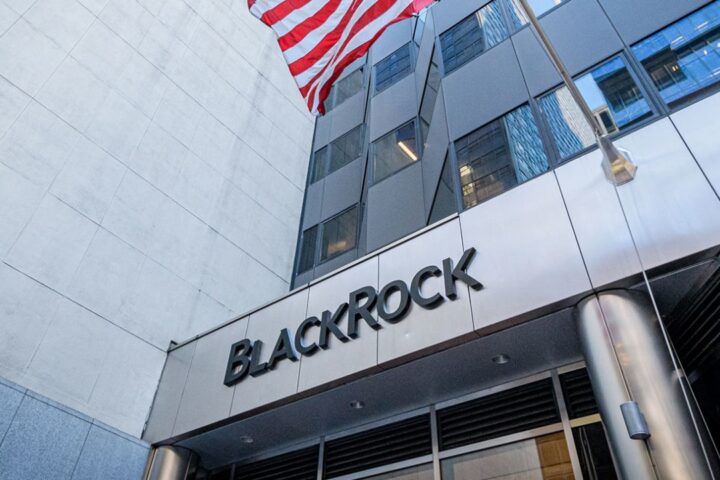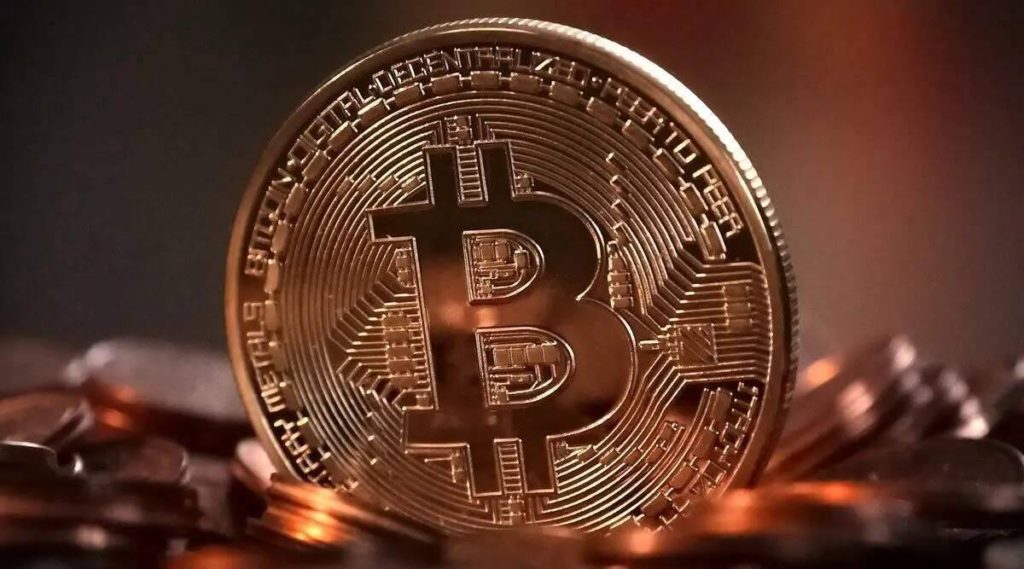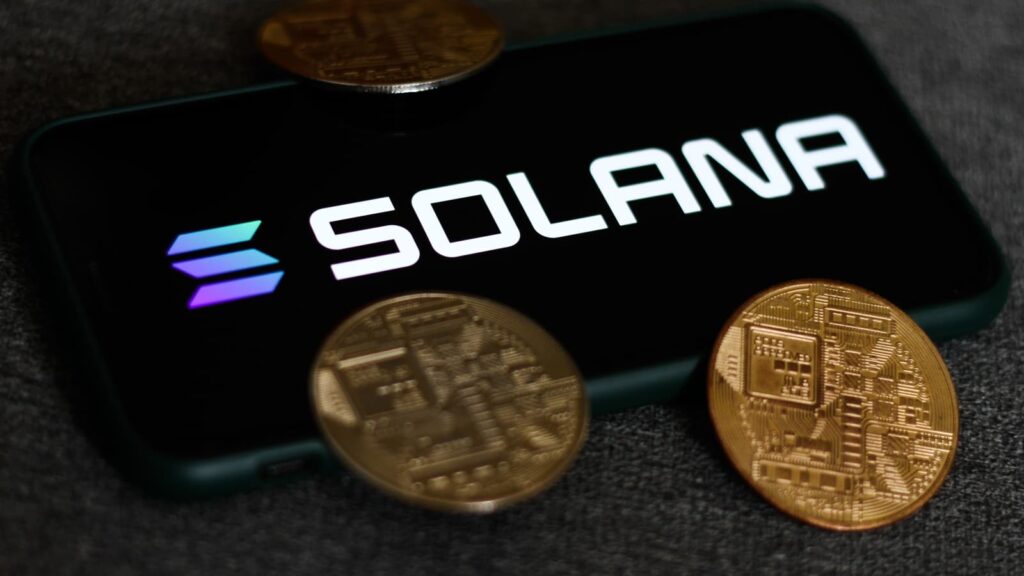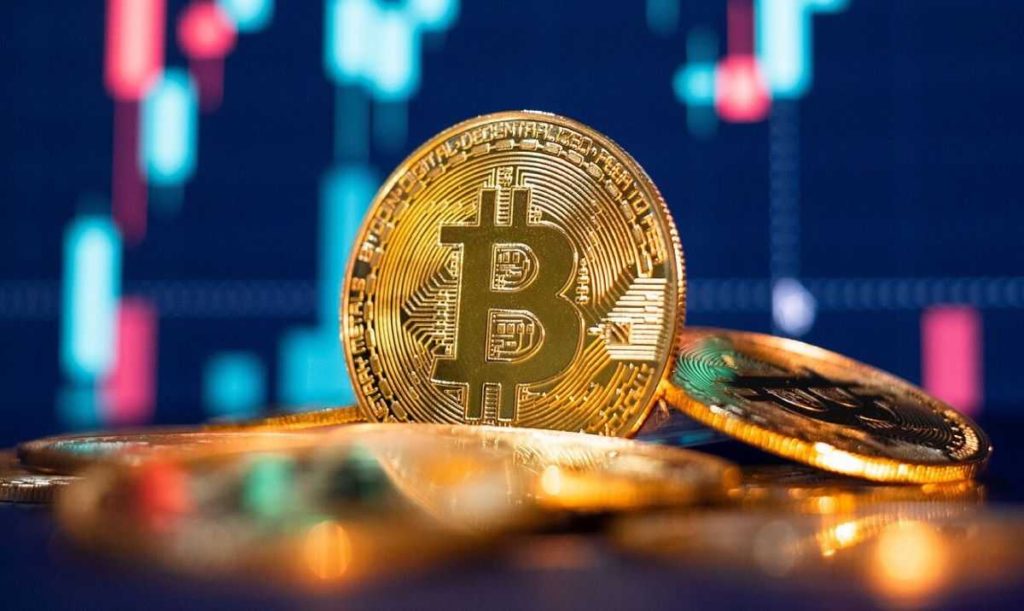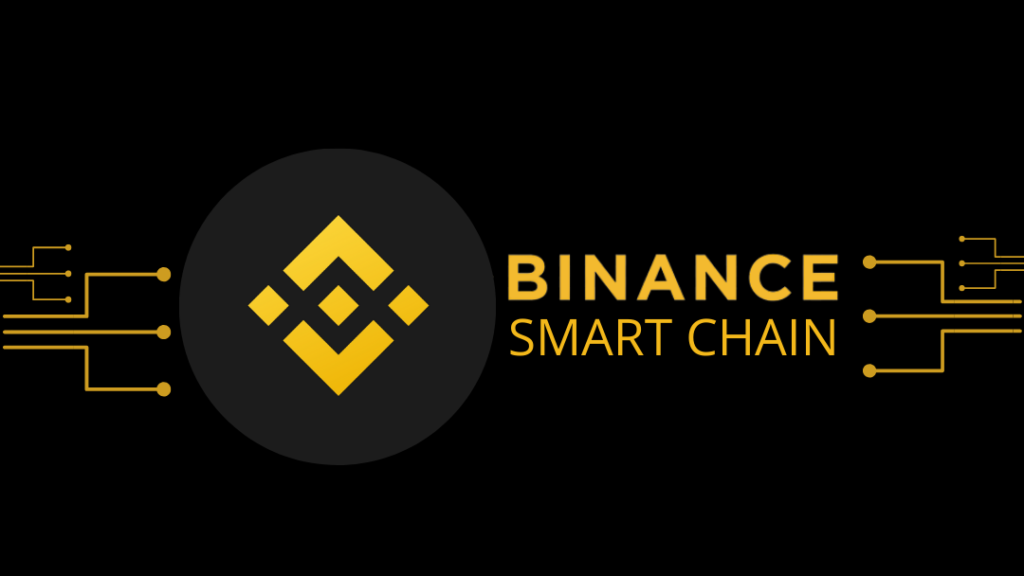Fundstrat’s Tom Lee believes the hype around digital asset treasuries (DATs) may be waning, but his optimism toward Ether remains strong.
According to on-chain data, BitMine Immersion Technologies has purchased around 379,271 Ether (ETH), worth nearly $1.5 billion, since last weekend’s record crypto market crash.
The company’s recent acquisitions were made across three transactions: 202,037 ETH following the crash, 104,336 ETH on Thursday, and another 72,898 ETH on Saturday, as reported by Arkham Intelligence and tracker “BMNR Bullz.” While BitMine has yet to confirm the figures publicly, data indicates the firm has been highly active in accumulating Ether throughout the recent downturn.
BitMine is currently the largest Ether treasury holder globally, possessing over 3 million ETH — equivalent to about 2.5% of the total supply — valued at around $11.7 billion. Having only started buying in July, when ETH traded near $2,500, the company has already reached half its goal of controlling 5% of the supply.
“Ethereum could flip Bitcoin similar to how Wall Street and equities flipped gold post 71,” Lee said during a discussion with ARK Invest CEO Cathie Wood on Thursday.
DAT Valuations Under Pressure
Despite the significant buying, Lee has suggested that the broader DAT market could be showing signs of fatigue.
He noted that several DATs are currently trading below their net asset value (NAV), meaning the market price of these entities is less than the value of the crypto they hold. “If that’s not already a bubble burst… How would that bubble burst?” Lee remarked in an interview with Fortune.
Research firm 10x Research also pointed out that major DATs, including Metaplanet and Strategy, are trading at or below their NAV. However, it added that firms with strong balance sheets and experienced management teams may still be able to “generate meaningful alpha.”
Huobi founder Li Lin has reportedly raised about $1 billion to launch his own Ether-focused treasury, signaling that investor appetite for institutional-level ETH exposure remains intact.
Gold’s Strength Adds Pressure to Crypto
In an interview with CNBC on Friday, Lee explained that many investors are still recovering from the recent market crash, calling it a period where they are “licking their wounds.”
He also said the crypto market is facing a case of “gold envy,” with the precious metal outperforming digital assets this year. “This is not the top of the crypto cycle, but leveraged longs in crypto are near record lows, so I think […] we’re at the basement and working our way back up,” Lee added.
Currently, the broader crypto market is down roughly 15% from its all-time high reached on October 7, while gold prices have declined about 3% from their recent peak.
Cryptocurrency treasury management has become an increasingly important aspect of corporate finance for companies holding digital assets. While traditional treasury functions focus on fiat currencies, corporate crypto treasuries manage large positions in digital assets such as Bitcoin (BTC) and Ethereum (ETH). These companies are navigating uncharted waters, balancing risk management, liquidity needs, and regulatory compliance while leveraging the growth potential of cryptocurrencies.
In this article, we explore BTC and ETH treasury companies, their funding strategies, associated risks, and emerging trends in corporate crypto management.
What Are BTC and ETH Treasury Companies?
BTC and ETH treasury companies are corporations or investment vehicles that maintain substantial holdings in Bitcoin or Ethereum as part of their financial strategy. Unlike typical investment firms that allocate a small percentage of capital to cryptocurrencies, treasury companies treat digital assets as core components of their balance sheets.
Companies like MicroStrategy, Tesla, and Galaxy Digital are examples of entities that have integrated cryptocurrencies into their treasury operations. BTC treasury companies focus primarily on Bitcoin, often positioning it as a store of value, while ETH treasury companies may hold Ethereum to capitalize on its network utility, DeFi applications, and staking rewards.
These treasury holdings are not just for investment purposes; they also serve as tools for strategic capital allocation, liquidity management, and hedging against fiat currency devaluation.
How BTC Treasury Companies Raise Funds
Raising capital for BTC-focused treasuries often involves a combination of traditional and crypto-specific financing methods:
1. Public or Private Equity
Some treasury companies issue equity to raise capital. This can involve selling common stock or preferred shares to institutional or retail investors, allowing them to acquire funds that are then converted into BTC. Companies like MicroStrategy have famously raised billions through equity offerings specifically to purchase Bitcoin.

2. Debt Financing
Corporate bonds or convertible debt are often used to fund crypto acquisitions. Debt financing allows companies to leverage capital without diluting equity. Convertible bonds may include a conversion clause into equity at a future date, making them attractive to investors willing to accept some risk in exchange for potential upside tied to the company’s overall performance and crypto holdings.
3. Revenue-Backed Funding
Some ETH treasury companies generate revenue directly through staking, lending, or operating blockchain infrastructure. Staking ETH on proof-of-stake networks allows companies to earn regular yields, which can then be reinvested into additional ETH purchases. Similarly, lending ETH through DeFi protocols provides liquidity while generating interest income.
4. Institutional Investment
Large institutional investors, such as family offices, hedge funds, or venture capital firms, may provide capital in exchange for a share of treasury holdings. These investors often seek exposure to BTC or ETH without directly buying cryptocurrencies themselves, relying on the company’s expertise in custody and asset management.
5. Strategic Partnerships
Some treasury companies form partnerships with crypto exchanges, fintech companies, or blockchain projects to raise capital or liquidity. These collaborations may involve shared investment vehicles, joint venture funds, or access to specialized crypto lending platforms.
How ETH Treasury Companies Raise Funds
ETH treasury companies often employ strategies similar to BTC treasuries but may leverage Ethereum’s programmable network:
- Staking Rewards: By staking ETH, companies earn yield that can be reinvested or distributed to investors.
- Decentralized Finance (DeFi) Protocols: Lending, liquidity provision, or yield farming generates capital that can fund additional ETH purchases.
- Equity Offerings: Like BTC companies, ETH-focused companies may raise equity in fiat to convert into Ethereum.
- Tokenized Securities: Some ETH treasury companies explore issuing tokenized equity or bonds, allowing investors to participate in crypto-backed corporate treasuries.
These approaches allow ETH treasury companies to generate ongoing revenue streams, unlike BTC treasuries that primarily rely on price appreciation.
Risks Facing BTC and ETH Treasury Companies
While crypto treasuries offer potential upside, they come with significant risks:
1. Market Volatility
Both BTC and ETH are extremely volatile. Prices can swing 10-20% in a single day, impacting the balance sheet of companies holding significant positions. A poorly timed purchase or sale can erode substantial value.
2. Regulatory Risk
Cryptocurrencies remain a gray area in many jurisdictions. Treasury companies face regulatory scrutiny related to reporting, taxes, and compliance. Unexpected regulations can freeze assets, limit transactions, or create legal exposure.
3. Custody and Security Risk
Digital assets require secure storage. Custodial failures, hacks, or loss of private keys can lead to irreversible losses. Companies often invest in multi-signature wallets, institutional custodians, and insurance coverage, but risk cannot be entirely eliminated.
4. Liquidity Risk
Large crypto holdings may be difficult to liquidate quickly without affecting the market price. Treasury companies need careful planning to manage cash flow requirements without triggering price drops.
5. Reputation and Market Perception
Companies holding cryptocurrencies face scrutiny from investors, media, and regulators. Public perception can impact stock prices, partnerships, and funding opportunities, particularly if the market experiences sharp downturns.
6. Operational and Strategic Risk
Managing a crypto treasury requires specialized knowledge in trading, risk management, and blockchain infrastructure. Poor operational decisions, lack of skilled staff, or misaligned strategy can result in financial losses.
Risk Mitigation Strategies
BTC and ETH treasury companies often employ a combination of the following strategies:
- Diversification: Holding a mix of BTC, ETH, and other digital assets to reduce reliance on a single cryptocurrency.
- Hedging: Using options, futures, or other derivatives to protect against price volatility.
- Multi-Signature Custody: Requiring multiple private keys for transactions to reduce security risk.
- Insurance: Purchasing crypto-specific insurance policies against theft or loss.
- Regular Reporting: Maintaining transparency with stakeholders to manage perception and comply with regulations.
Fundraising Considerations and Investor Expectations
Investors in crypto treasury companies often consider:
- Transparency: Detailed reporting of holdings, risk measures, and returns.
- Revenue Streams: For ETH treasuries, yields from staking and lending may attract investors seeking income, not just appreciation.
- Governance: Clear policies for asset management and decision-making.
- Exit Liquidity: The ability to convert holdings into cash or tokens without large losses.
Trends in Corporate Crypto Treasury Management
- Institutionalization: Increasingly, large corporations and hedge funds are professionalizing crypto treasury operations.
- Diversification Across Assets: Combining BTC, ETH, stablecoins, and tokenized securities.
- Integration With Traditional Finance: Using crypto as collateral for loans, or linking treasury strategies to fiat operations.
- Staking and DeFi Revenue Models: ETH treasuries are exploring decentralized finance as a source of consistent income.
These trends indicate that corporate crypto treasuries are evolving from speculative holdings to strategic, revenue-generating operations.
FAQ
Q1: Are BTC treasury companies riskier than ETH treasury companies?
Not inherently, but BTC is generally treated as a store of value with lower utility, while ETH offers staking and DeFi opportunities. ETH treasuries may have more operational complexity, increasing execution risk.
Q2: Can treasury companies lose all their crypto?
Yes, through hacks, loss of keys, or extreme market events. Risk mitigation strategies like multi-signature wallets and insurance help reduce this risk but cannot eliminate it entirely.
Q3: How do treasury companies generate returns aside from price appreciation?
BTC treasuries primarily rely on price appreciation. ETH treasuries can generate staking rewards, lending interest, or DeFi yields. Some companies may also earn transaction fees from network participation.
Q4: Are these companies regulated?
Regulation varies by country. Many operate in legal gray areas, but they are increasingly subject to financial disclosure, anti-money laundering (AML), and taxation rules.
Q5: How do investors participate in these treasuries?
Investors may buy equity in publicly traded companies holding crypto, participate in tokenized securities, or invest through private funds. Transparency and reporting are key considerations.
Q6: Is it better to hold BTC or ETH in a corporate treasury?
It depends on objectives. BTC is often seen as a store of value, similar to gold. ETH provides staking opportunities and exposure to DeFi but may require more active management. Many companies hold both to balance risk and reward.
Q7: What happens if crypto prices crash?
Treasury companies face unrealized losses, which may impact balance sheets and investor confidence. Risk mitigation strategies such as hedging or diversification can soften the impact.
Q8: Are there tax implications?
Yes. Treasury holdings may be subject to capital gains, income from staking, or corporate taxation depending on jurisdiction. Companies must track transactions carefully to ensure compliance.
Q9: Can small businesses implement crypto treasuries?
In theory, yes. But risks are higher due to limited expertise, capital, and access to secure custody solutions. Most treasury management strategies are tailored to institutional or corporate-level operations.
Q10: What is the future of crypto treasuries?
Corporate crypto treasuries are likely to grow as more companies adopt digital assets for liquidity, investment, and operational purposes. Integration with traditional finance, improved regulatory clarity, and innovation in DeFi and staking will shape the next decade.
Spot Bitcoin exchange-traded funds (ETFs) in the United States have endured a challenging week, with more than $1.2 billion in total outflows as Bitcoin’s price slumped.
Data from SoSoValue showed that the 11 US-listed spot Bitcoin ETFs saw a combined outflow of $366.6 million on Friday alone, marking the fifth consecutive day of investor withdrawals.
The biggest losses came from BlackRock’s iShares Bitcoin Trust, which shed $268.6 million. Fidelity’s fund recorded $67.2 million in outflows, while Grayscale’s GBTC lost $25 million. Valkyrie also saw minor outflows, while other funds reported no net movement.
Over the full week, total redemptions reached $1.22 billion — the largest since early summer. The only exception was a modest inflow on Tuesday, which briefly interrupted the otherwise bearish streak.
Bitcoin Price Slides to Four-Month Low
The ETF exodus coincided with a steep decline in Bitcoin’s price.
The leading cryptocurrency plunged more than $10,000 over the week, falling from just over $115,000 on Monday to a low of under $104,000 by Friday.
This marks Bitcoin’s weakest performance in four months, with traders reacting to a combination of macroeconomic concerns and reduced risk appetite among institutions.
Analysts say the correction could test investor confidence in recently approved spot ETFs, which had previously seen steady inflows during Bitcoin’s rally earlier this year.
Schwab Reports Growing Crypto Engagement
Despite the ETF outflows, Charles Schwab remains optimistic about the long-term potential of crypto exchange-traded products (ETPs).
Rick Wurster, CEO of Charles Schwab, told CNBC on Friday that clients at the firm currently hold 20% of all crypto ETPs in the United States.
Crypto ETPs have been “very active,” he noted, adding that traffic to Schwab’s crypto site has risen 90% in the past year.
“It’s a topic that’s of high engagement,” Wurster said.
ETF analyst Nate Geraci highlighted Schwab’s growing presence in the market, commenting that the brokerage — one of the largest in the country — is positioning itself for wider crypto adoption.
Schwab currently provides access to crypto ETFs and Bitcoin futures but plans to launch spot crypto trading for clients in 2026.
October Reverses Bitcoin’s Seasonal Gains
Historically, October has been one of Bitcoin’s strongest months, often referred to by traders as “Uptober.”
According to data from CoinGlass, Bitcoin has recorded gains in ten of the past twelve Octobers. However, this year has bucked the trend, with the cryptocurrency losing around 6% so far this month.
Still, analysts remain hopeful that the second half of October could bring a rebound, as markets anticipate potential Federal Reserve interest rate cuts that may boost risk assets like Bitcoin.
A Florida lawmaker is making a second attempt to let the state invest in digital assets such as Bitcoin and crypto exchange-traded funds (ETFs).
Republican Representative Webster Barnaby filed the new proposal, known as House Bill 183, after his previous bill was withdrawn earlier this year.
Expanding Florida’s Investment Scope
HB 183, introduced Wednesday, would authorize the State Board of Administration and other public entities to invest up to 10% of their portfolios in digital assets.
These could include Bitcoin, crypto securities, exchange-traded products, NFTs, and other blockchain-based investments.
Barnaby’s new version strengthens rules around custody, documentation, and fiduciary duties, ensuring secure management of any digital holdings.
The lawmaker also broadened the scope of eligible assets beyond Bitcoin-only exposure, aiming to give Florida greater flexibility in diversifying its reserve strategy.
If approved, the measure would take effect on July 1, 2026.
Crypto Reserve Bills Face National Challenges
Despite the growing interest in crypto reserves, only three U.S. states — Arizona, New Hampshire, and Texas — have successfully passed similar legislation.
New Hampshire’s HB 302 allows up to 5% of public funds to be invested in digital assets with a market cap above $500 billion, currently limited to Bitcoin.
Texas’ Senate Bill 21 established a Bitcoin-only reserve, while Arizona’s HB 2749 permits digital asset reserves only from unclaimed property.
Barnaby’s Florida proposal would make it the first major state economy to pursue a diversified crypto investment policy.
Additional Bill Targets Stablecoin Regulation
In a related move, Barnaby also filed HB 175 to simplify the regulatory landscape for stablecoin issuers operating in Florida.
The bill specifies that stablecoin providers fully backed by U.S. dollars or Treasury securities should not require separate state licenses.
It also mandates monthly audits to ensure reserves are fully collateralized and publicly verifiable.
Like the crypto reserve bill, HB 175 is scheduled to take effect in July 2026.
California Strengthens Crypto Property Rights
Meanwhile, California Governor Gavin Newsom signed legislation last week protecting unclaimed digital assets from being automatically converted to cash.
Senate Bill 822 ensures that unclaimed crypto holdings remain in their original form under state custody.
The law allows account holders to recover their assets by submitting valid claims with the California State Controller’s Office, further establishing digital property rights in the U.S.
A Republican lawmaker in the US House of Representatives has introduced legislation to make one of President Donald Trump’s executive orders — which allows alternative assets such as cryptocurrencies in 401(k) retirement plans — a permanent part of federal law.
Representative Troy Downing presented the draft bill before the House Financial Services Committee, aiming to codify Executive Order 14330 and give it lasting legal authority.
The move, first reported by Politico, would mark a significant step toward integrating digital assets into mainstream retirement investment options.
Trump’s Executive Order on Retirement Options
Executive Order 14330, signed by Trump on August 7, directs that every American planning for retirement should have access to funds that include “alternative assets” when deemed suitable by a fiduciary overseeing the plan.
The order defines alternative assets broadly — including private market investments, real estate, commodities, infrastructure projects, lifetime income strategies, and digital assets through actively managed investment vehicles.
Although executive orders set federal priorities, they do not carry the permanence of law and can be overturned by subsequent administrations or court rulings.
To make such policies enduring, Congress must pass a bill approved by both chambers and have it signed into law.
Legislative Push Continues Despite Shutdown
Despite an ongoing government shutdown, Congress remains able to introduce and debate new legislation.
Trump’s executive order also instructed the Department of Labor, the Securities and Exchange Commission (SEC), and the Treasury Secretary to review and prioritize new guidance for 401(k) plans within six months.
The goal is to expand access to diversified retirement investment strategies, including exposure to digital and alternative assets.
Expanding Crypto Access for Retirement
The initiative to include digital assets in US retirement accounts has been building momentum throughout 2025.
Earlier this year, the Department of Labor withdrew Biden-era guidance warning fiduciaries to be “extremely cautious” about including crypto in retirement portfolios.
In September, shortly after Trump’s executive order took effect, nine lawmakers sent a letter to SEC Chair Paul Atkins urging faster implementation.
They argued that doing so could “help the 90 million Americans that are currently restricted from investing in alternative assets to secure a dignified, comfortable retirement.”
According to data from the Investment Company Institute (ICI), Americans held $9.3 trillion in 401(k) assets as of June 30, 2025 — highlighting the potential scale of impact if digital assets become a standard investment option.
Industry Divided on Crypto’s Role in 401(k)s
The proposal has sparked debate among financial experts.
Critics warn that crypto’s volatility could endanger retirement savings, while supporters see it as an important step toward financial modernization.
André Dragosch, head of European research at Bitwise, told Cointelegraph in August that the inclusion of cryptocurrency in US retirement plans “could mark a major step for Bitcoin adoption and attract billions in new capital.”
Bitcoin’s price turbulence continued Friday after briefly plunging to $102,000, as traders reacted to U.S. President Donald Trump’s announcement of a 100% tariff on Chinese imports.
Swan Bitcoin CEO Cory Klippsten said the market should brace for more instability in the days ahead, warning that macroeconomic forces are likely to keep influencing Bitcoin’s short-term movements.
“If the broader risk-off mood holds, Bitcoin can get dragged around a bit before it finds support and starts to decouple again,” Klippsten said.
Market Wipeout Follows Tariff Announcement
The crypto market saw over $8 billion in long liquidations within 24 hours, according to CoinGlass data.
Bitcoin alone accounted for around $2.19 billion in liquidations, wiping out leveraged positions as prices fell sharply across exchanges.
“We’ve got a little panic in the markets right now, classic macro whiplash. Trump and China are trading tariff threats, equities are off, and traders are scrambling to derisk,” Klippsten added.
Ray Salmond, head of markets at Cointelegraph, said many traders “were totally caught off guard” by the speed of the sell-off. He described the tariff announcement as having “sent shockwaves across the crypto market.”
At the time of writing, Bitcoin had rebounded slightly, trading near $113,270, according to CoinMarketCap.
Cascading Liquidations Across Exchanges
Salmond highlighted how the price divergence between major trading platforms underscored the severity of the liquidation cascade.
On Coinbase, the BTC/USD pair hit a low of $107,000, while Binance’s perpetual futures saw Bitcoin fall to $102,000.
“The dislocation really illustrates the severity of the cascading liquidations and how stops were completely obliterated,” Salmond explained.
He referenced data from Hyblock, which revealed that nearly all downside long liquidity had been absorbed, leaving a liquidation cluster between $102,000 and $97,000.
Tariffs and Past Price Reactions
This isn’t the first time a tariff announcement from Trump has rattled the crypto markets.
In April, similar trade measures triggered fears of a global slowdown and sent Bitcoin tumbling.
On February 1, after Trump signed an executive order imposing tariffs on goods from China, Canada, and Mexico, Bitcoin briefly dipped below $100,000.
Analysts View Dip as Opportunity
Despite the turmoil, some analysts see the correction as a healthy market reset.
Bitwise Invest’s senior investment strategist Juan Leon noted that “the best time to buy BTC has tended to be when it is being dragged down by broader markets.”
Matt Hougan, chief investment officer at Bitwise, reminded investors that buying during pullbacks is rarely comfortable but often beneficial.
“It never feels good when you buy the dip. The dip comes when sentiment drops. Writing the number down can be a good form of discipline,” Hougan said.
Bitcoin’s sharp swings remain tied to macro events, but analysts maintain that the long-term outlook for the cryptocurrency remains intact.
Cryptocurrency investment products have recorded their highest-ever weekly inflows, fueled by investor concerns over US government stability and the ongoing rally in spot crypto markets.
According to CoinShares, global crypto exchange-traded products (ETPs) saw $5.95 billion in inflows during the week ending Friday, setting a new record.
Factors Behind the Surge
James Butterfill, CoinShares’ head of research, attributed the unprecedented inflows to several macroeconomic factors.
“We believe this was due to a delayed response to the FOMC [Federal Open Market Committee] interest rate cut, compounded by very weak employment data […], and concerns over US government stability following the shutdown,” he said.
Bitcoin, the largest cryptocurrency by market capitalization, hit a new historic high above $125,000 on Saturday, coinciding with the surge in inflows.
Bitcoin ETPs Lead the Pack
The $5.95 billion inflows surpassed the previous record of $4.4 billion from mid-July by 35%, underscoring the scale of investor interest.
Unlike the earlier record, which was almost evenly split between Bitcoin and Ether, this time Bitcoin dominated inflows, attracting a record-breaking $3.6 billion.
“Despite prices closing in on all-time highs during the week, investors did not choose to buy short investment products,” Butterfill noted.
Ether ETPs still posted strong results, drawing $1.48 billion in inflows and pushing year-to-date totals to $13.7 billion — nearly three times last year’s figure.
Solana ETP inflows ranked third at $706.5 million, while XRP products added $219.4 million, both setting their own records.
Total Assets Under Management Reach New High
In line with these inflows, the total assets under management (AUM) in crypto funds surged past $250 billion for the first time, hitting $254.4 billion.
This milestone signals renewed institutional and retail investor confidence in cryptocurrency-based products.
ETF Launches Continue Despite Shutdown Concerns
The record-setting week for crypto ETPs unfolded even as the US Securities and Exchange Commission (SEC) shut down operations last week due to a government shutdown.
This development raised concerns about potential delays for high-profile exchange-traded fund (ETF) approvals expected in October.
According to Crypto in America’s Eleanor Terrett, the SEC retains the ability to act on fraud and market emergencies during the shutdown but is widely expected to experience routine delays.
“It’s like a rain delay,” Bloomberg’s senior ETF analyst Eric Balchunas commented.
Despite these concerns, Grayscale Investments, the second-largest US crypto ETF provider after BlackRock, launched two new staking-focused products on Monday.
Staking-Focused ETFs Arrive
The Grayscale Ethereum Mini Trust ETF (ETH) and the Grayscale Ethereum Trust ETF (ETHE) now allow investors to receive additional staking rewards alongside gains from the funds’ market performance.
These launches highlight the continued innovation in crypto investment products, even amid regulatory and operational uncertainties in the United States.
The combination of record inflows, rising asset prices, and new product launches underscores a bullish environment for digital asset investment vehicles.
Solana is gaining renewed attention among institutional investors, according to Matt Hougan, Chief Investment Officer of crypto asset manager Bitwise.
Hougan recently told Solana Labs that Solana has the potential to become “the new Wall Street” among blockchain networks.
He emphasized that to traditional financial audiences, Bitcoin feels “very ephemeral” and difficult to conceptualize in institutional investment frameworks.
Instead, he said, these investors are watching stablecoins and tokenization more closely:
“Really important people are saying that stablecoins will reinvent payments and tokenization will reinvent stock, bond, commodity, and real estate markets.”
When evaluating blockchain platforms, Hougan said institutions gravitate toward efficiency, low latency, and transaction finality.
In that context, he pointed to improvements in Solana’s settlement speed—from 400 microseconds to 150 microseconds—as an attribute that interfaces well with how institutional players like to trade.
Solana’s Place in the Stablecoin Landscape
Despite Solana’s growing traction, it remains small in comparison to Ethereum in the stablecoin space.
On Solana, on-chain stablecoin value totals about $13.9 billion, giving it 4.7% market share as measured by RWA.xyz.
Ethereum, by contrast, holds a dominant position: ~$172.5 billion in stablecoin value, or ~59%, which rises to 65% when layer-2s are included (e.g. Arbitrum, Base, Polygon).
AJ Warner, Chief Strategy Officer at Offchain Labs, contrasted the two platforms, asserting:
“TVL is definitely not everything, but I don’t think you can doubt where the best place to launch new stablecoins is. Build within the EVM.”
This underscores that many in the industry still see Ethereum’s ecosystem and compatibility as a strong moat.
Bitwise’s Long Bet on Solana
Bitwise has been publicly bullish on Solana before. At Token2049 in Singapore, its CEO Hunter Horsley argued that Solana may outshine Ethereum in the staking ETF arena.
His argument hinged on Solana’s faster unstaking period, which is important for funds that must be able to redeem assets swiftly.
Bitwise currently offers a Physical Solana ETP, allowing investors exposure to SOL via fully backed assets in institutional custody.
However, this product remains modest in size, with approximately $30 million in assets under management.
A more ambitious move is Bitwise’s application for a spot Solana ETF, with regulatory approval expected (or decided) around October 16.
At the time of Hougan’s remarks, SOL was trading around $227, down 2% on the day and more than 22% below its January high.
Betting on the Future of Tokenization
Hougan’s thesis frames Solana not merely as a blockchain, but as a platform poised for adoption by Wall Street players.
Stablecoins and tokenization represent an entry point for institutional flows.
If a network offers low friction, high throughput, and reliable finality, it could become a preferred infrastructure for tokenizing real-world assets.
Whether Solana can climb further against Ethereum’s entrenched position remains a question—yet Bitwise is clearly positioning itself for that possibility.
Bitcoin miner CleanSpark ended September with 13,011 BTC in its treasury, reflecting stronger efficiency and output compared to the previous year.
The company’s monthly production rose 27% from September 2024, mining 629 BTC and selling 445 BTC for approximately $48.7 million at an average price of $109,568.
In its Friday update, CleanSpark reported that its fleet efficiency improved 26% year over year, while its average operating hashrate for the month reached 45.6 EH/s.
Push for Financial Independence
CleanSpark has been selling a portion of its monthly Bitcoin production since April as part of its strategy to become financially self-sufficient.
It also opened an institutional Bitcoin trading desk to facilitate these sales.
In August, the company generated $60.7 million from the sale of 533.5 BTC, demonstrating the scale of its operations.
The miner’s shares on Nasdaq rose 5.28% following the report and gained more than 23% over the week, according to Yahoo Finance.
The broader market has also been buoyant.
The market capitalization of 15 major publicly traded Bitcoin miners reached a record $58.1 billion in September, up from $41.6 billion in August and more than double the $19.9 billion recorded in March, according to The Miner Mag.
Challenges Ahead for Bitcoin Miners
Despite investor enthusiasm for mining stocks, the industry faces increasing headwinds.
Higher energy costs and the risk of tariffs on imported mining equipment could weigh on profitability.
In August, The Miner Mag reported that U.S. Customs and Border Protection alleged some of CleanSpark’s 2024 mining rigs were manufactured in China.
This could leave the company with potential tariff liabilities of up to $185 million.
Iris Energy (IREN), the largest Bitcoin miner by market capitalization, is also contesting a separate $100 million tariff dispute with the agency.
According to Cointelegraph, the effective duty on China-made mining rigs stands at 57.6%, while machines imported from Indonesia, Malaysia, and Thailand face tariffs of 21.6%.
Rising Mining Difficulty
Bitcoin mining difficulty reached record highs in September and October.
This means miners now expend more computing power and energy to produce the same amount of Bitcoin, putting further pressure on operational costs.
CleanSpark’s push for efficiency and its growing BTC reserves highlight its determination to navigate these challenges while maintaining financial independence.
BNB, the native cryptocurrency of the BNB Chain developed by Binance, reached a historic milestone on Friday as its price surged to an unprecedented $1,111.90.
The token, which has become one of the largest in the market, climbed more than 7.4% in the past 24 hours and has soared 17.5% over the past week, according to CoinGecko data.
This rally coincides with a renewed wave of institutional interest. Analysts noted that treasury companies have been accumulating BNB, particularly since the coin’s previous all-time high in July. Regular token burns conducted by Binance have also been cited as a major driver of price appreciation, with some predicting even more growth ahead.
Predictions Point to Further Upside
Standard Chartered projected in May that BNB could peak at $1,275 in 2025, forecasting that its performance would mirror gains in other top cryptocurrencies like Bitcoin and Ether.
The broader crypto market also participated in Friday’s upswing. Total cryptocurrency market capitalization rose 1.6% to reach $4.2 trillion, highlighting continued investor appetite for digital assets.
BNB Chain Metrics Show Robust Growth
The rally in BNB’s price is not happening in isolation. Activity on BNB Chain has been climbing sharply, according to DefiLlama.
The network’s total locked value (TLV) increased 2.5% in the past 24 hours, topping $8.23 billion. At the same time, the number of active addresses hit 73.24 million last month, the highest level on record.
Transaction volumes have also surged. In September, BNB Chain logged 4.34 million transactions, its second-largest monthly tally behind June’s record high.
This growth comes despite a recent security scare. The official X account for BNB Chain was compromised on Wednesday, with hackers posting phishing links designed to target crypto wallets.
Network Upgrades Aim to Boost Efficiency
BNB’s team is also implementing key upgrades to improve network efficiency. On Wednesday, validators and builders operating on the chain adopted a new minimum gas price of 0.05 gwei. According to a post on X, this change is expected to deliver faster and cheaper transactions.
“Next step for wallets, CEXs and trading platforms: To adopt 0.05 gwei to align with the network and keep BNB Chain the most attractive home for onchain activity,” the BNB team stated.
Looking further ahead, the team plans to increase the block gas limit from 100 million to 1 billion in order to handle rising demand. By 2026, the goal is to create a blockchain architecture capable of processing 20,000 transactions per second with confirmation times under 150 milliseconds.
More Upgrades Already Live
Two major upgrades have already been implemented this year. The Maxwell upgrade went live in June, designed to produce faster blocks, enhance validator coordination and improve overall performance. It also fueled speculation that another price rally could be imminent.
In April, the Lorentz Hard Fork was activated, cutting block times and strengthening validator networking. This adjustment made BNB Chain more suitable for latency-sensitive applications and set the stage for its current growth.
The BNB team has also outlined plans for native privacy features, upgradable virtual machines, and more user-friendly tools in 2026, positioning the network as a major competitor in the blockchain space.

